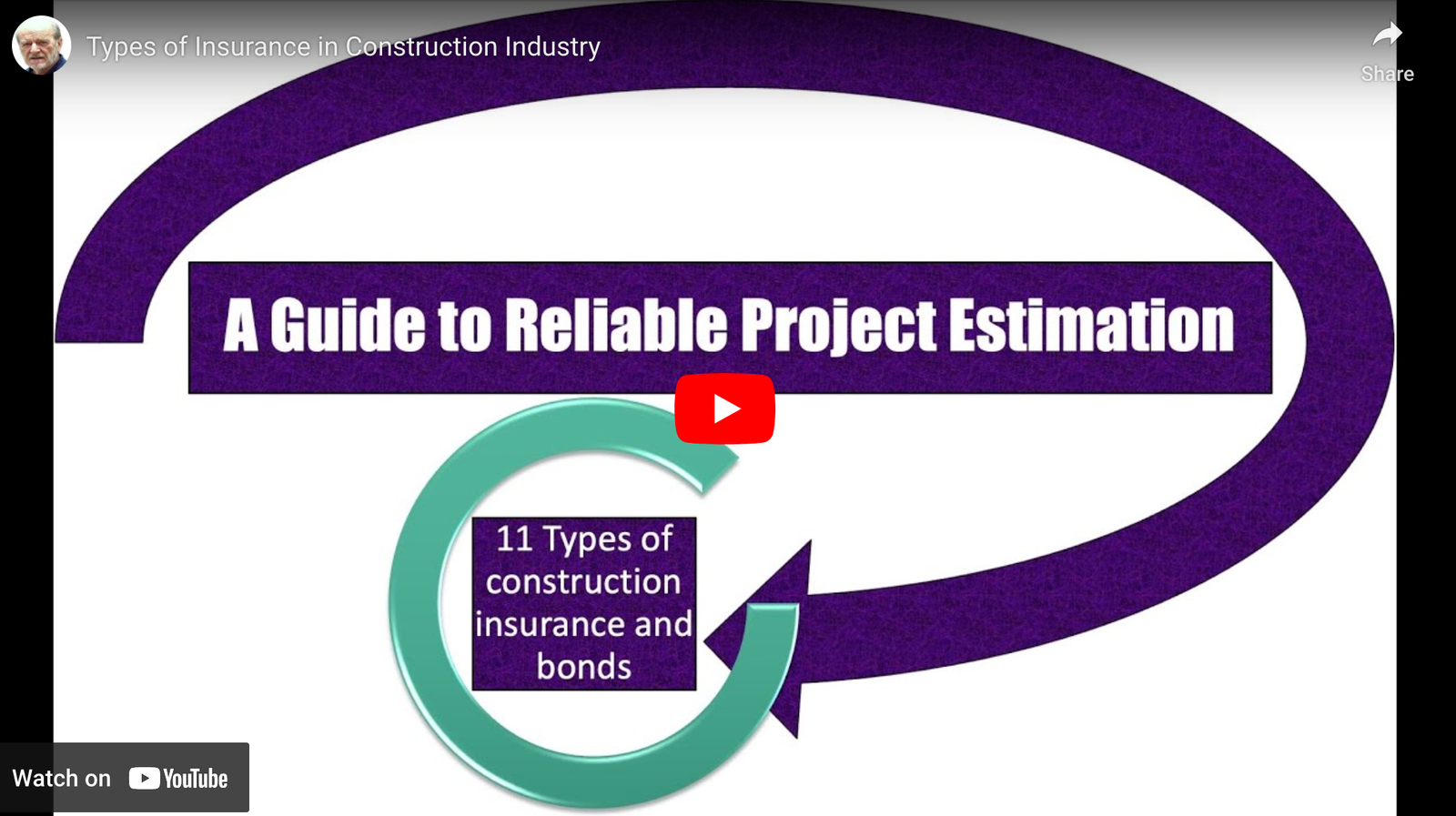 A Guide to Construction Insurance Coverage. Understanding the various types of construction insurance and bonds is crucial for anyone involved in the construction industry. In this guide, we’ll break down the 11 most important types of construction insurance and bonds, explaining why they are necessary and how they can protect your projects from unforeseen risks.
A Guide to Construction Insurance Coverage. Understanding the various types of construction insurance and bonds is crucial for anyone involved in the construction industry. In this guide, we’ll break down the 11 most important types of construction insurance and bonds, explaining why they are necessary and how they can protect your projects from unforeseen risks.
Overview: Why Construction Insurance and Bonds Are Critical
In this video, we delve into 11 essential types of construction insurance and bonds. These insurance policies and bonds are indispensable for ensuring that your projects are not only compliant with legal requirements but also safeguarded against potential financial losses.
Types of Insurance for Construction Bids
Understanding the types of insurance required in construction bids is the first step to ensuring that your project meets all necessary legal and financial criteria.
Bid Document Insurance Requirements
The bid document typically outlines the types of insurance that must be in place before a project can begin. Here’s a table showing the types of insurance often required by bid documents:
| Type of Insurance | Description |
|---|---|
| Workers’ Compensation | Covers injuries to workers on-site. |
| Compulsory Life Insurance | Mandatory coverage for all employees. |
| Civil Liability Insurance | Protects against third-party claims. |
| Professional Liability | Covers errors and omissions in design and planning. |
Key Insurance Types – 11 Essential Types of Construction Insurance and Bonds
Let’s explore the key types of insurance and bonds that are commonly required:
1. Bid Integrity Guarantee
This bond ensures that the contractor will honor their bid and execute the contract if awarded.
2. Workers’ Compensation Insurance
Essential to cover medical expenses and lost wages for workers injured on the job.
3. Compulsory Life Insurance
Provides life insurance coverage for all employees, often required by law.
4. Civil Liability Insurance for Companies
Covers the company against claims of property damage or bodily injury caused to third parties.
5. Professional Liability Insurance
Also known as Errors and Omissions (E&O) insurance, this policy covers professional services provided by architects, engineers, and other design professionals.
6. Civil Liability for Environmental Pollution
Covers damages related to environmental pollution caused by construction activities.
7. Commercial Vehicle Insurance
Required for vehicles used in the course of construction activities, covering damages and liabilities.
8. Contractors’ Machinery and Equipment Insurance
Covers the machinery and equipment used in construction projects against damage or loss.
9. Contract Performance Guarantee
This bond guarantees that the contractor will complete the project as per the terms of the contract.
10. Financial Advance Guarantee
This bond secures any advance payments made by the project owner to the contractor, ensuring they will be refunded if the contractor fails to meet their obligations.
11. Advance and/or Collection Guarantee
This type of guarantee ensures that the contractor will complete the project on time and that any advance payments will be used appropriately.
Additional Clauses Required by Clients
In some cases, clients may require additional insurance clauses or bonds to further protect their interests. These additional requirements should be carefully reviewed and incorporated into the project planning.
Importance of Consulting Legal and Insurance Experts
Given the complexity of construction insurance and bonds, it’s essential to consult with legal counsel or an experienced insurance broker. They can help you navigate the specific requirements based on your project’s location, local laws, and the particular demands of your client.
Conclusion: Protect Your Project with the Right Insurance and Bonds
Having the right insurance and bonds in place is not just a legal requirement but a crucial step in protecting your construction project from unforeseen events that could lead to significant financial losses. Be sure to review your bid documents thoroughly and seek professional advice to ensure that all necessary coverage is secured.
Next Video: Contingency in Construction: A Guide to Reliable Estimation